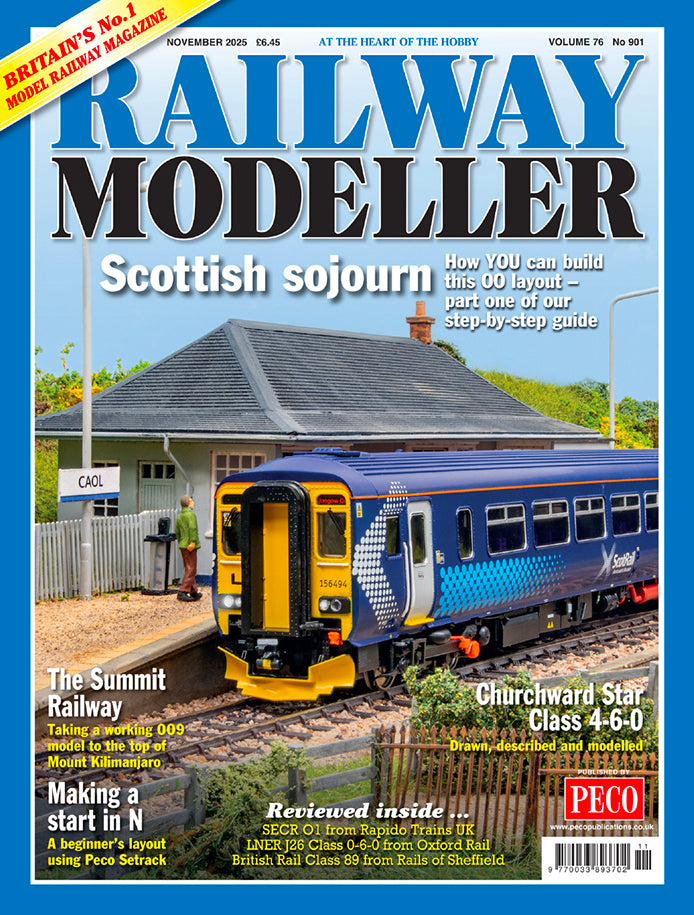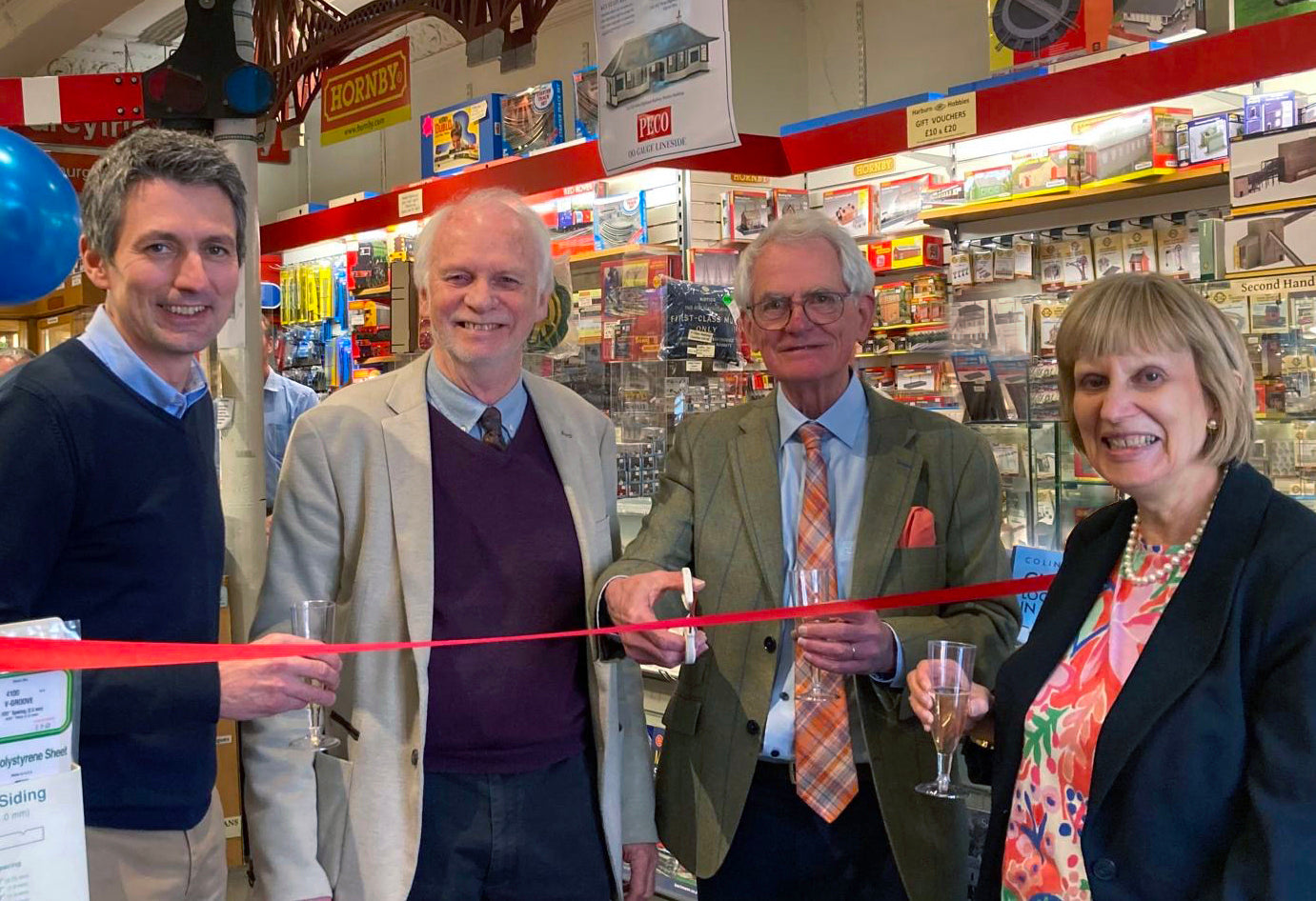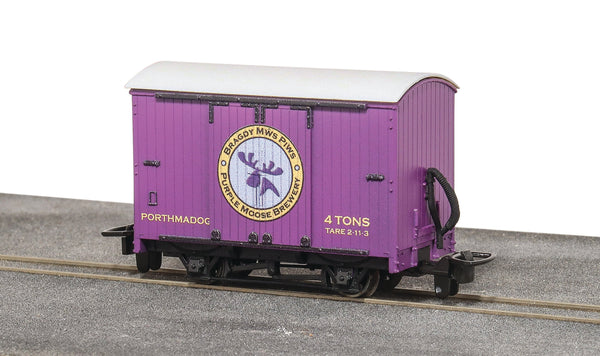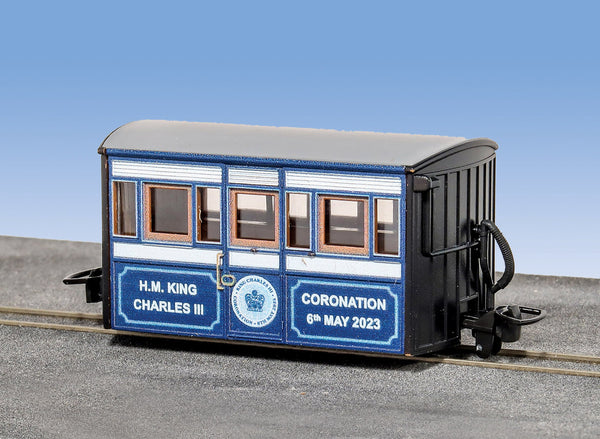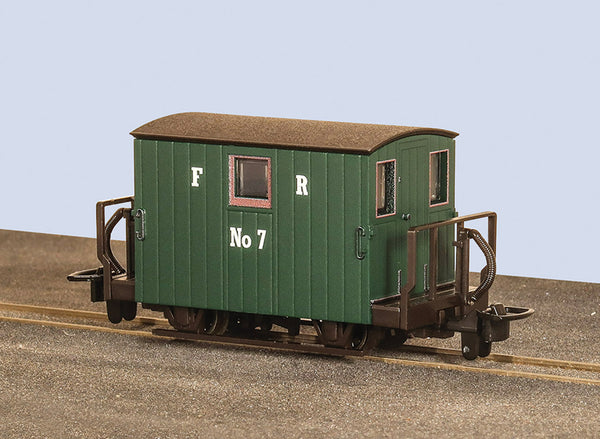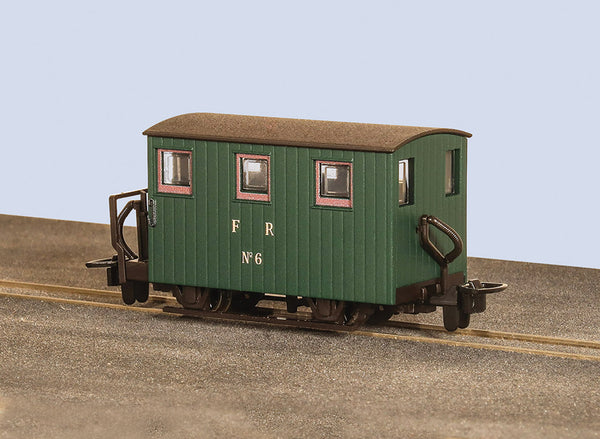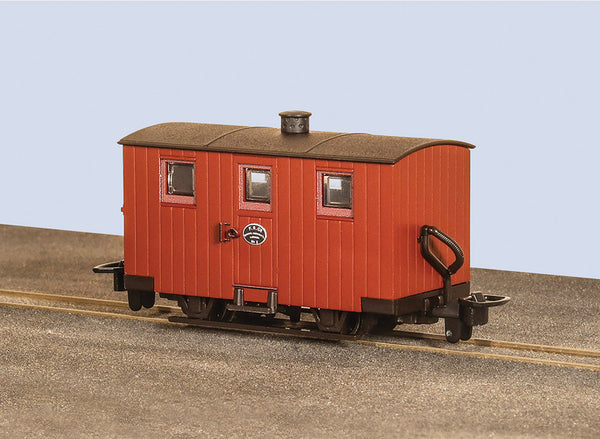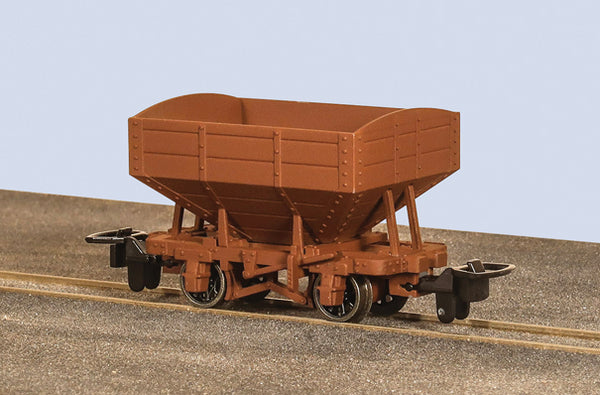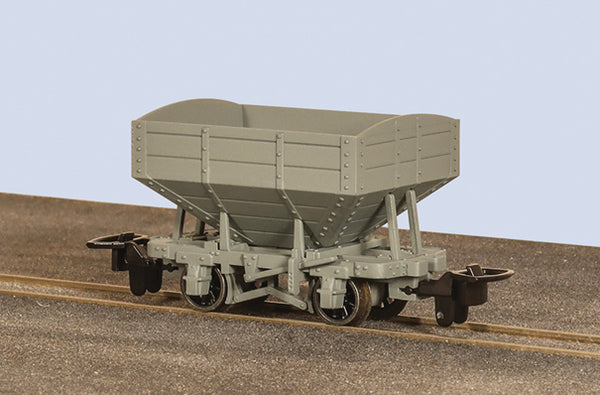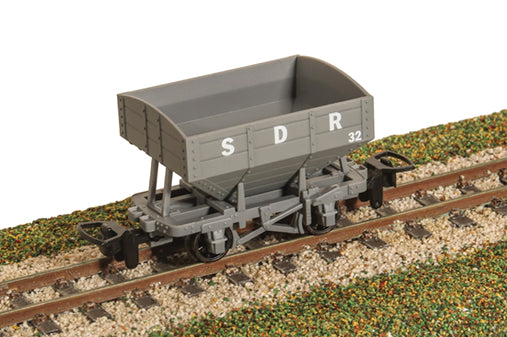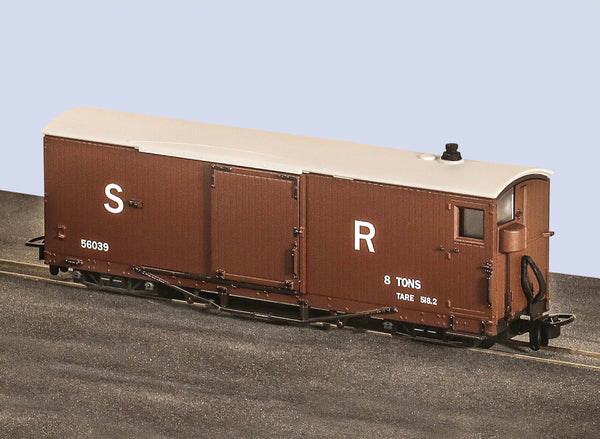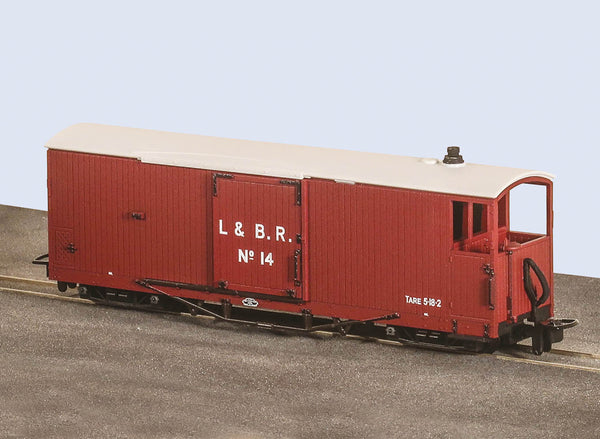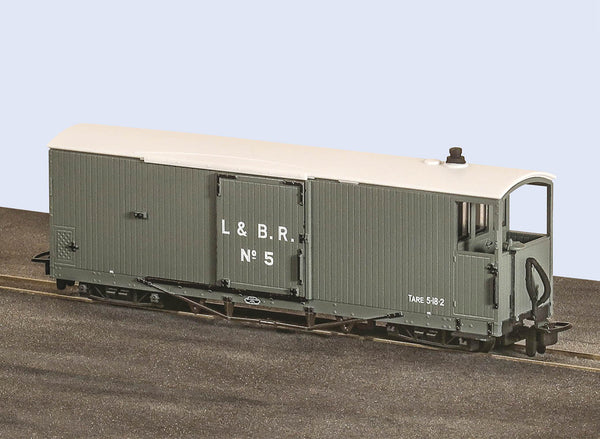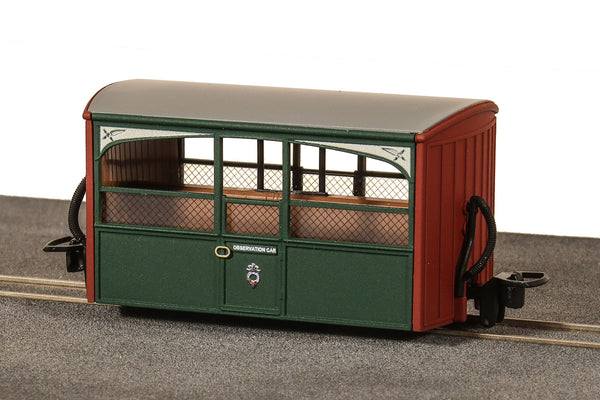BROWSE PECO PRODUCTS
Browse through our complete product portfolio.
75 Products Found
00-9 "Purple Moose Brewery" L&B Box Van
Based on the Lynton & Barnstaple box van, this partially fictitious livery will chime well with fans of the Ffestiniog Railway and the wider OO-9 community. Located in Porthmadog, centre of the universe as far as Welsh narrow gauge enthusiasts are concerned, beer from the Purple Moose Brewery is popular with many visitors to the area and is the inspiration for this unique little wagon. Why not visit their website and learn for yourselves the origins of this local brewer and the tale behind the very unusual name! PURPLE MOOSE BREWERY
OO-9 BUG BOX - KING CHARLES III CORONATION 2023 - LTD EDT
Celebrating the coronation of His Majesty the King on 6th May. We have produced a limited edition model in a coronation livery for both models, incorporating the official logo for this historical event.
The curiously-named "Bug Box" 4-wheel coaches were the first passenger carrying coaches built for the Ffestiniog Railway. Dating from 1864 to 1867 they were built by Brown, Marshall & company. The term "Bug Box is a more recent term given to them, possibly in the 1950s, and originally they were referred to as "Small Birmingham's".
OO-9 FR Quarryman Coach, Green, Brake Coach (Double Balcony)
From 1867 the Ffestiniog Railway used dedicated carriages to carry workmen to and from the slate quarries around Blaenau Ffestiniog. From 1885 to 1887, eighteen of what are now referred to as the ‘Type 3’ Quarrymen’s carriage were built featuring sprung axle boxes, one central door on each side and droplight windows. More of the same design were made to replace the older carriages and there were a total of thirty-six in the 1900s. Archive images show a significant number of these coaches being used to transport workers to the quarry site.
 
OO-9 FR Quarryman Coach, Green, Brake Coach (Single Balcony)
From 1867 the Ffestiniog Railway used dedicated carriages to carry workmen to and from the slate quarries around Blaenau Ffestiniog. From 1885 to 1887, eighteen of what are now referred to as the ‘Type 3’ Quarrymen’s carriage were built featuring sprung axle boxes, one central door on each side and droplight windows. More of the same design were made to replace the older carriages and there were a total of thirty-six in the 1900s. Archive images show a significant number of these coaches being used to transport workers to the quarry site.
 
OO-9 FR Quarryman Coach
From 1867 the Ffestiniog Railway used dedicated carriages to carry workmen to and from the slate quarries around Blaenau Ffestiniog. From 1885 to 1887, eighteen of what are now referred to as the ‘Type 3’ Quarrymen’s carriage were built featuring sprung axle boxes, one central door on each side and droplight windows. More of the same design were made to replace the older carriages and there were a total of thirty-six in the 1900s. Archive images show a significant number of these coaches being used to transport workers to the quarry site.
 
Snailbeach Hopper Wagon, Unmarked Brown
The Snailbeach District Railways system was located in Shropshire and was built to carry lead ore over a narrow gauge route with a gauge of 2ft 4 inches. The mines were located at Stiperstones and they transferred their ore to a connection with the Great Western Railway at Pontesbury.  A fleet of various hopper wagons was used to transport the ore and it is one of those wagons that is the subject of our new model. Opened in 1877 the railway was finally closed in 1959, latterly using tractors to move the hoppers after the end of steam.
Snailbeach Hopper Wagon, Unmarked Grey
The Snailbeach District Railways system was located in Shropshire and was built to carry lead ore over a narrow gauge route with a gauge of 2ft 4 inches. The mines were located at Stiperstones and they transferred their ore to a connection with the Great Western Railway at Pontesbury.  A fleet of various hopper wagons was used to transport the ore and it is one of those wagons that is the subject of our new model. Opened in 1877 the railway was finally closed in 1959, latterly using tractors to move the hoppers after the end of steam.
Snailbeach Hopper Wagon, SDR Grey
The Snailbeach District Railways system was located in Shropshire and was built to carry lead ore over a narrow gauge route with a gauge of 2ft 4 inches. The mines were located at Stiperstones and they transferred their ore to a connection with the Great Western Railway at Pontesbury.  A fleet of various hopper wagons was used to transport the ore and it is one of those wagons that is the subject of our new model. Opened in 1877 the railway was finally closed in 1959, latterly using tractors to move the hoppers after the end of steam.
OO-9 Lynton & Barnstaple 8 ton Bogie Goods Brake Van, SR, Brown, No.50639, Closed Veranda
These finely detailed ready to run coaches and wagons are accurately modelled on the rolling stock of the Lynton and Barnstaple Railway, both as an independent railway and after its' absorption into the Southern railway in 1922. They are also available painted but unlettered for those modellers who wish to tailor them for use on other lines.
OO-9 Lynton & Barnstaple 8 ton Bogie Goods Brake Van, Red, No.14, Open Veranda
These finely detailed ready to run coaches and wagons are accurately modelled on the rolling stock of the Lynton and Barnstaple Railway, both as an independent railway and after its' absorption into the Southern railway in 1922. They are also available painted but unlettered for those modellers who wish to tailor them for use on other lines.
OO-9 Lynton & Barnstaple 8 ton Bogie Goods Brake Van, Grey, No.5, Open Veranda
These finely detailed ready to run coaches and wagons are accurately modelled on the rolling stock of the Lynton and Barnstaple Railway, both as an independent railway and after its' absorption into the Southern railway in 1922. They are also available painted but unlettered for those modellers who wish to tailor them for use on other lines.
OO-9 FR Bug Box Coach, Zoo Car, Early Preservation Livery
The curiously-named "bug Box" 4-wheel coaches were the first passenger carrying coaches built for the Ffestiniog Railway. Dating from 1864 to 1867 they were built by Brown, Marshall & company. The term "Bug Box is a more recent term given to them, possibly in the 1950s, and originally they were referred to as "Small Birmingham's".
There are three types of vehicle: First Class, Third Class, and Open third, sometimes referred to as “Zoo” cars.




